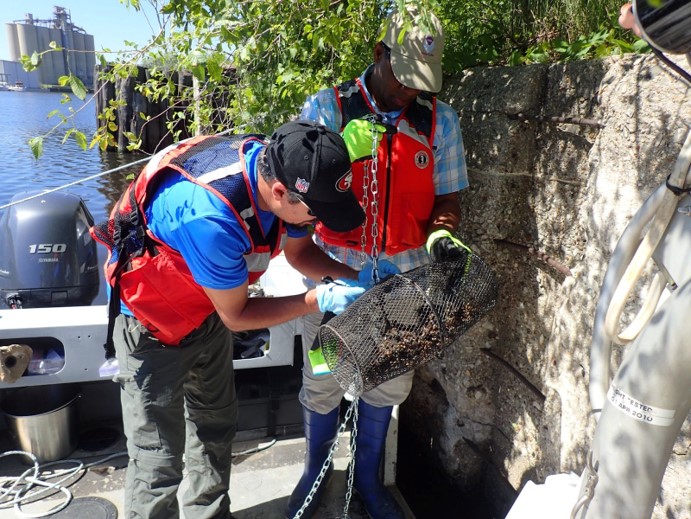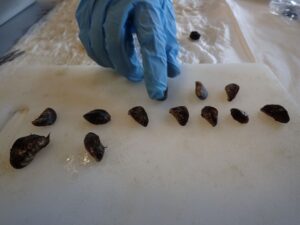
When scientists from NOAA’s National Center for Coastal Ocean Science (NCCOS) examined invasive quagga mussels in Wisconsin’s Milwaukee Estuary, they discovered impacts from pollution on the metabolism of the mussels. NCCOS scientists, in collaboration with investigators from NOAA’s Great Lakes Environmental Research Laboratory, used metabolomics, a technique that measures concentrations of biological substances produced during metabolism, to determine the potential effects of pollution in the Milwaukee Estuary on the health of mussels. Metabolomics is emerging as an important technique used by environmental scientists and managers to identify potential effects of pollutants.
The Great Lakes Basin faces a variety of environmental stressors, including the spread of invasive species, climate change, urban and agricultural development, and chemical pollution. The Milwaukee Estuary, located on the west coast of Lake Michigan, was originally designated as an Area of Concern in 1987 under the Great Lakes Water Quality Agreement. The original Area of Concern was expanded in 2008 to include tributaries that feed contaminated sediment into the estuary.

In order to examine how exposure to contaminants impacts bivalve health in the Great Lakes, the scientists collected quagga mussels from the Milwaukee Harbor and randomly allocated them into six cages. The cages containing mussels were deployed at six locations in the Milwaukee Estuary in the summer of 2017, including less polluted offshore areas in Milwaukee Bay and more contaminated sites in tributary rivers of the estuary such as the Kinnickinnic and Menominee Rivers. The cages were fitted with temperature and oxygen monitoring devices, as well as passive samplers which provide an assessment of contamination over the time for which cages were deployed. Mussel tissue was also analyzed for different types of contaminants including pharmaceuticals, pesticides, and polycyclic aromatic hydrocarbons (PAHs) which are associated with the burning of coal, gasoline, tobacco, wood, and garbage.
When the scientists examined data from the passive samplers and mussel tissue they found higher levels of PAH contamination in the tributary rivers compared to sites in Milwaukee Bay, which is likely associated with industrial activities and fossil fuels. The study also analyzed metabolites in caged mussels after two, five, and 55 days of deployment to determine the influence of time on mussel health. Overall, few changes in the measured metabolites were found after two and five days of caging, whereas up to 97 metabolites out of 223 analyzed were impacted after 55 days. Water temperature appeared to have a larger effect on the metabolites of mussels compared to pollution. Overall, the findings of this research provide important information on the effects of pollution in the Great Lakes on mussels and will allow scientists to design effective future studies to monitor the effects of pollution on the environment.
Visit the Journal of Environmental Toxicology and Chemistry webpage to read the published study.
This research was completed by scientists from NOAA NCCOS, and NOAA Great Lakes Environmental Research Laboratory.
